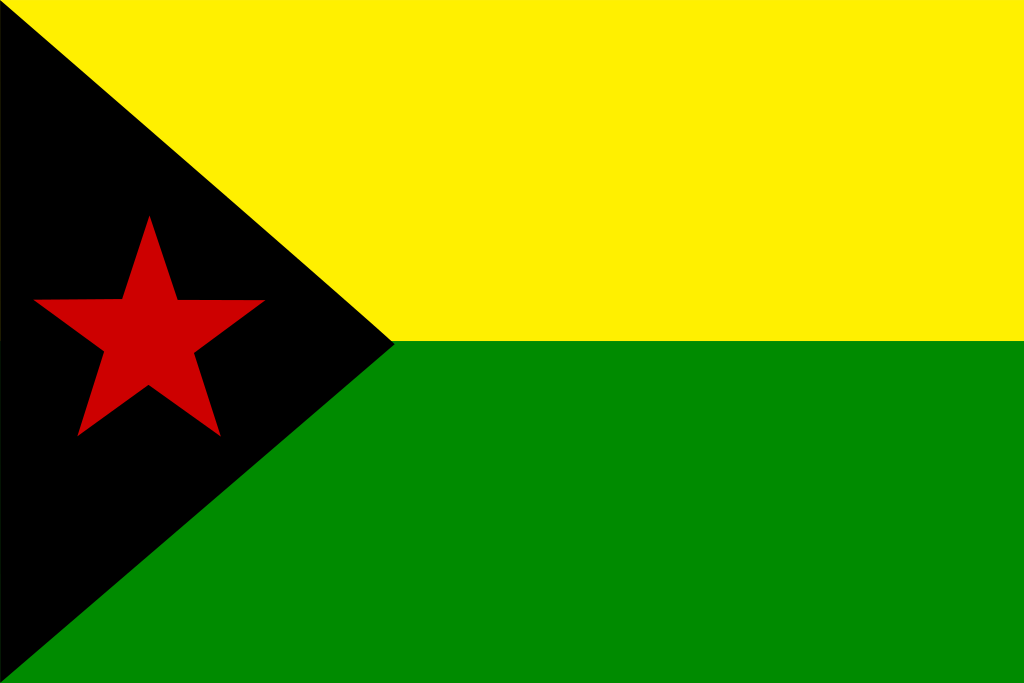AGUACHICA
Department
Antioquia Department, Colombia

Flag of the Department of Antioquia
Flag of the city
The flag is made up of two stripes, one yellow at the top, another green at the bottom; both on the far left covered by a black triangle with a red five-pointed star. The color Yellow: Represents the guayacán, a native tree of this region. The color Green: Symbolizes natural wealth in products such as cane and coffee. The color Black: Symbolizes coal mines, which is abundant in the city soils. The red star: represents the blood that is spilled daily in search of black gold.

Seal of the city

Slogan of the city
The slogan “Liberty and Valour” reflects a message of freedom and bravery for the city. The inclusion of “Liberty” suggests a focus on freedom, independence, and perhaps the historical or cultural significance of the city in relation to liberation or autonomy. “Valour” is synonymous with courage, bravery, and strength in the face of adversity. This component of the slogan may highlight the resilience and fortitude of the city and its inhabitants.
History

Amagá, a town and municipality nestled in the Antioquia Department of Colombia, has a history woven with industrial significance and political prominence. The area surrounding Amagá has long been recognized for its contributions to Colombia’s industrial landscape. Notably, the town was renowned for its coal and iron ore production. The extraction and processing of these resources played a crucial role in the economic development of the region. Early iron works in Amagá were emblematic of its industrial prowess, marking a stage in Colombia’s history where such production processes were foundational to local economies. Amagá holds the distinction of being the birthplace of Belisario Betancur, a notable figure in Colombian politics. Betancur, who served as the President of Colombia, left an indelible mark on the nation’s history. His political career and leadership contributed to shaping the trajectory of Colombia during a significant period. Situated in the Southwestern Antioquia subregion, Amagá benefits from the picturesque landscapes and natural resources characterizing this part of Colombia. The geographical context likely influenced the town’s historical development and its role in industries such as mining and metallurgy. In summary, Amagá’s history is intricately linked to its role in coal and iron ore production, early iron works, and its notable association with Belisario Betancur. The town’s industrial heritage and political contributions have left a lasting imprint on the historical narrative of the Antioquia Department.
Geography of the city
Amagá, a town in the Antioquia Department of Colombia, is positioned at the coordinates 6°03′N latitude and 75°42′W longitude. Embraced by these geographical coordinates, Amagá unfolds across an area totaling 84 square kilometers (32 square miles). The town’s landscape, marked by its specific latitude and longitude, captures the essence of its geographical setting in the broader Southwestern Antioquia region. This 84 square kilometers not only delineate the physical boundaries of Amagá but also encapsulate the diverse terrains and features that contribute to the town’s distinctive character within the rich landscapes of Antioquia.

Population
Total – 29,555 (2015)
One photo representative of the city

Etymology
Many place names have origins in the languages of the indigenous peoples who historically inhabited the region. If the name has Spanish origins, it might be linked to a historical event, a prominent figure, or a geographical feature. Spanish explorers and settlers often named places after saints, events, or natural characteristics
What the city is known or famous for

Amagá is known for its historical significance in coal and iron ore production, along with hosting early iron works. The extraction and processing of coal and iron ore have played a crucial role in the economic development of the area. The presence of early iron works indicates a history of industrial activity, highlighting the town’s contribution to Colombia’s industrial landscape. The significance of Amagá in coal and iron ore production suggests a strong industrial heritage, and the early iron works point to the town’s role in the early stages of metallurgical processes. These industries likely played a vital role in shaping the local economy and contributing to the broader development of the region.
